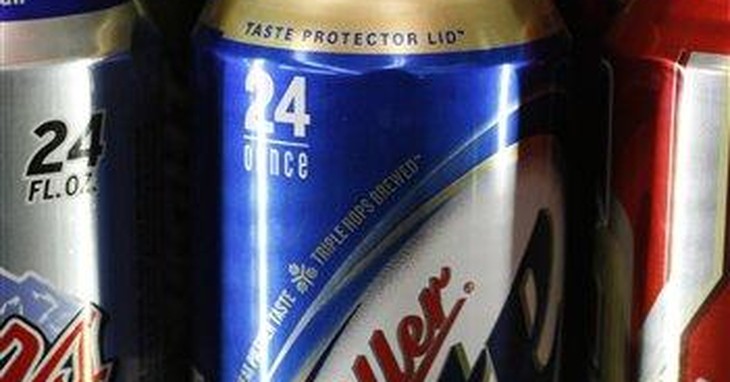Taking a deeper look at drinking from the bottom of a glass.
Despite the name of this column, I decided it was needed to look into one of the more basic components of our national imbibing culture, the beer that is the scourge of foam-sucking, Lite Beer. We are living through a golden hops age of craft brewing today, with thousands of breweries mushrooming across the country and more styles of beer, ales, and other divisions cropping up, and old styles being revisited. It is a lush time for lushes, as it were.
Yet one fundamental truth holds supreme: We are a nation of lite beer drinkers. Painful as it sounds, the fact is this watery version in the zymurgy realm has technically been around for over 50 years, and it dominates the marketplace. Of the top-selling beers, the top four are all Lite labels – with Bud Lite nearly doubling sales of second-place Coors Lite. Totaling over 60 million barrels sold between just those four beers, with two additional found in the top-10, our love of the Lite is a reality, and we need to face it.

Clarifying Our History
Beer was one of the first products the colonists produced when they pitch cabin on these shores. It was not a widespread product, however, as the amount of grains required limited production. It would take the arrival of immigrants from various countries with a history of beer production to mean our fruited plain would inspire only more to be made. The primary recipe was ale, as this was both the standard from many lands, and it was made on the quick. Some variations can be made in as little as 10 days to two weeks.
Large barrels would be produced locally and sent to saloons, where the proprietor would hammer a crude spout into the bunghole located at the lower end of a barrel head. This would be served at room temperature, and the quality was not something to dispute; you did not have large cooler aisles of selections at your disposal.
The middle of that century saw rapid development, as 1850 saw a few hundred breweries in operation, and that number would double in less than a decade. At this time came the creation of a new style that Americans would soon desire. In 1842 Pilsner was created, named after the Czech town where it was developed. When this recipe came to the states, it was quickly adopted. Clear, more consistent in quality, and preferably served cold, it proved a hit with those who toiled in the heat.
Just ahead of the Civil War, the first refrigeration machine was invented, and this would be the key to revolutionizing beer distribution. Adolphus Busch began mass production and selling his beer via chilled railcars, which would be refilled along routes by icehouses, making for the first nationwide beer brand. But, it would be another century before the Lite beer craze would be launched.
Miller’s Dubious Claim to Infamy
Miller Lite has a gauzy relationship with its claim of being the first Lite Beer. The brand was launched in 1973, and had established itself with the use of athletes in its commercials to hawk its new concoction. Former New York Jets running back Matt Snell appeared in their very first ad spot, establishing a tried formula for their commercials that would last for decades.
Miller has claimed to be the originator of this style, saying “we invented Lite Beer.” Except, they really did not. You got a sense of the dodge when a spokesperson a few years back was pressed on the matter: “We are a great, authentic lite beer. We invented the category.” There was a reason for this hedge. While they retain the rights to the original formula, they did not create it. It was obtained.
The original light beer was created not by a brewer, but by a biochemist. Dr. Joseph L. Owades sought a way for producing a lower-bodied brew, and he found his method, not by watering things down but by isolating an enzyme that would prompt the yeast to digest the starches in the beer’s wort. This would lead to lowered carbohydrates and fewer calories.
Employed by Rheingold brewing, his formula was used in 1967 to make Gablinger’s Diet Beer. It was less filling, and far less than a success. After the failure, the doctor had a friend at Meister-Brau and gave him the recipe to make Meister-Brau Lite.
This is the one that kicked off our national shame… pic.twitter.com/QRMSDWgcYz
— Brad Slager 🍸🥃🍺🎙 Lifetime Subscriber to CNN+ (@MartiniShark) April 30, 2022
In 1972 that Chicago brewer went bankrupt, so Miller stepped in and bought up three of the labels, including the former diet beer. After tinkering with the recipe, a year later, Miller unrolled its new product.
To say it was a success is an understatement.
The Options For Unhefting
These days, the term Lite has become a subjective term. Some labels have their own version of things. Sam Adams Lite, for example, is actually ‘Lite-er,’ meaning it tops off at 120 calories and sports eight grams of carbs; far heavier than most Lite beer, but less than the signature label at 170 calories and 10 carbs. Anheuser Busch Natural Ice manages to come in with nearly 6 percent alcohol.
The entire premise of a need for a lower calorie drink essentially defies the desire to drink beer, but as we know, there is marketing psychology at play here. As an example, look at the popularity of Michelob Ultra, marketed as a beer for the active lifestyle. People engaged in these activities generally do not imbibe with regularity, but the push has worked – Mich Ultra stands as the number four highest-selling label.
What would be the wiser option is the designation of Session Beer. Not an actual style, these are generally regarded as lower alcohol brews – below 5 percent – but are often made with a bit more skill and flavor. They are looked at as daytime weekend sippers, the kind of thing you reach for after yardwork or a game. Better still, you can enjoy something with quality and avoid the shame of drinking a Lite Beer.















